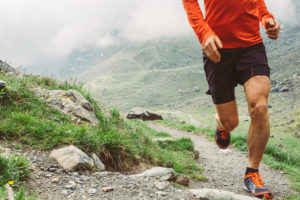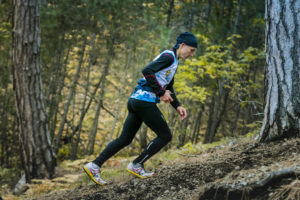Strength and conditioning in sport are more common place over time. The role of the strength and conditioning specialist becoming more important as athletes look to maximise their potential. This makes a lot of sense from when we considier the benefits of being a stronger athlete. A stronger athlete will, in most cases, never be anywhere tapping out their strength in a game situation. The conditioning side is about what is the appropriate type of work to be done. There is a lot to be gained from training the different energy systems but what ones are important. Knowing what aspects to train and where to place them are very important. There is no point in a marathon runner doing a Tabata session or a sprinter running for an hour. Plyometric drills that can of great benefit when used correctly for runners of all distances. Continue reading “STRENGTH training for runners”
Lower limb injury assessment
The first step in any injury assessment is what previous injuries do you have. The biggest predictor of future injury lies in your injury history. As a result looking into your injury history will play an important roll in deciding on what needs to be done. If you have previously injured your ankle, knee or hip these are areas we need to investigate in the injury assessment. We do this becasue of the scale of the impact they have on the way you move. Two of the more important things that we are looking out for in the clinic are asymmetries and pain.When we are assessing movement we are looking to see both how good it is and does it cause pain. Continue reading “Lower limb injury assessment”
Runningbesideme.me blog
I wanted to let you know about this great little blog by Mandy and Owain Williams Running Beside Me. It covers their own running experiences, reviews of different products, general thoughts and ramblings plus they organise a little trail running group the Foxy Trail Runners if you fancy the idea of getting in some trail running but don’t like the idea of going out on your own. They cover both ends of the running spectrum with Owain having a 35 min 10k and sub 3 hour marathon and Mandy more of a social but serious runner. It’s a great little blog by local Edinburgh runners and I recommend you check it out.
I keep spraining my ankle, it must be weak
This isn’t an uncommon thing to hear from anyone unfortunate enough to suffer regular ankle injuries. The likely hood that you have weak ankles is very low even if you are spraining one or both of them regularly. The cause of the problem is more likely one of poor communication between the brain and the muscles surrounding your ankle which results in a loss of what we call proprioception. Continue reading “I keep spraining my ankle, it must be weak”
Strengthening your calf muscles for running
Having stronger calf muscles is a great way to help reduce the chances of injury. The lower leg and feet take something of a pasting when you run. The peak load that occur when you are running start at around 3 times your body weight. In the lower leg the peak loads on soleus are 7 times body weight at normal running speeds. Wse types of loads it is easy to see the benefits of stronger calf muscles. The 2.5 figure is at slower running speeds and not sprinting. When sprinting the overall peak load is 7 or 8 times your body weight. From this it is easy to see how any interval session is going to be even more stressful. Continue reading “Strengthening your calf muscles for running”
Preparing for a marathon
Marathon preparation is a lengthy one and it is worth spending some time planning it. If you have just finished one or a half marathon and thinking about your next challenge. It may be stepping up to the marathon or looking at setting a PB in the next marathon. Whatever challenge the next race is it’s worth setting some goals and formulating a training plan.
It’s estimated that for those tackling the marathon around 90%, yes you read that correctly 90%, will pick up some sort of injury. This is simply down to the training being tough. You need to get used to spending a lot of time on your feet and it gets to the stage where a short run is 5 or 6 miles. Not all of these injuries will be significant in terms of lost training time but it still highlights how demanding the training is. Continue reading “Preparing for a marathon”
How to manage runners knee
Runners’ Knee is a common complaint with runners. 10% of runner’s will experience some sort of knee pain in any given year. Given it’s so common what causes it and what can you do about it?
Generally most injuries runner pick up are of a “repetitive strain” nature and runner’s knee is no exception. Given the nature of running, this isn’t really that big a surprise. There aren’t really many demands in terms of changing direction or speed. It is very much about simply putting one foot in front of the other. Continue reading “How to manage runners knee”
Plantar fasciopathy – a pain in the foot.
Plantar fasciopathy is a problem with the plantar fascia. The plantar fascia is a band of strong, thick connective tissue that spans the base of the foot from the calcaneus, your heel bone, to the toes. It plays a large role in increasing the strength of the arches of the foot, tying the bones of the foot together to prevent them collapsing under your weight.
 Continue reading “Plantar fasciopathy – a pain in the foot.”
Continue reading “Plantar fasciopathy – a pain in the foot.”
5 races you could do if you didn’t have knee pain
Knee pain is a familiar problem for runners and accounts for about 20% of running injuries. The big problem with it is often in tackling hills where it can be fine as you go up but the pain really increases as you descend and as a result you are always looking for flat courses while you deal with it. Here are 5 courses from across Scotland that really do require your knees to be in pain free before you tackle them.
The Whangie Wizz
The Whangie Wizz has to be in the list for it’s name alone but it would be a great introduction to hill racing if you hadn’t done any before.
Famous for it’s mountain biking trails Glentress also hosts 3 trail races over 10k, 21k and 42k. I had two clients do the half marathon event this year on what was a dry day but pretty grim conditions under foot as it had been raining heavily that week.
With a route that is anything but flat, this multi-terrain route will give you plenty of challenges and some amazing views.
I would suggest infinitely more interesting than the Edinburgh Marathon itself, in my opinion. The Seven Hills of Edinburgh doesn’t have a specific route beyond you have to cover all of Edinburgh’s 7 hills starting on Calton Hill before you finishing back on Calton Hill. The course is just over 14 miles and has 2,200ft of ascent/descent and takes you around the city from Edinburgh Castle, Corstrophine Hill, Craiglochkhart Hill, Braid Hill, Blackford Hill and Arthur’s Seat. It takes the top finishers around 100 minutes and has to be one of the most interesting city races about.
I’ve been to Harris, though not to do the race, and it is stunning regardless of the weather and we got everything except snow when we were there. Whilst not as hilly as you might think there are enough descents that you would definitely want your knees to be in good shape before tackling it.
Making the time
We live in a world where we are constantly bombarded with information, be it 24 hour news on TV or on our phones, which are more power in computing terms than the most advanced IBM mainframe of 30 years ago, we get a stream of texts, emails, Facebook notifications to twitter and on it goes. You can add into this doing all the tasks that other people used to do for you. Going on holiday? You went to the travel agent and they sorted it out for you. Need to do some banking? do it online etc, etc.



